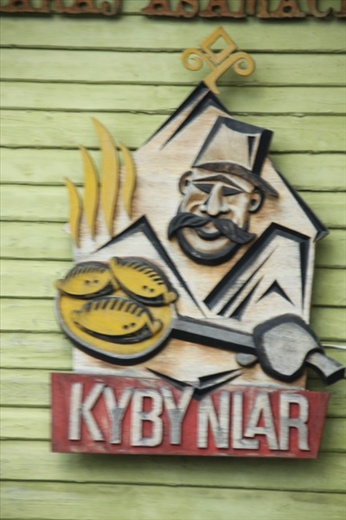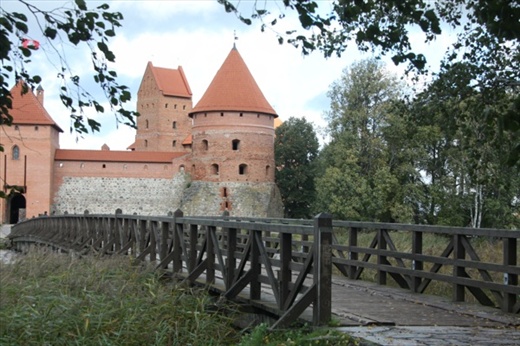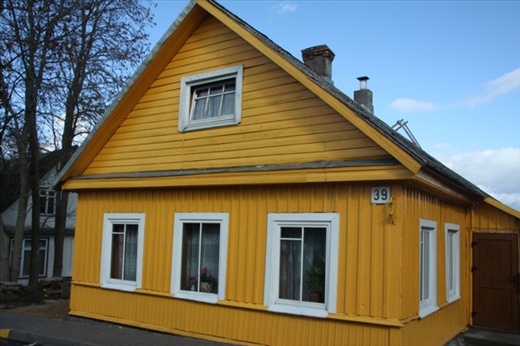Two "must do's" in Trakai, according to our guide, Julia; visit the Island Castle and eat a kybynlar, the local speciality. Well, we booked the trip to see the castle and I just couldn't resist the juicy lamb pie. Yummy!

You must try a Kybynlar lamb pie in Trakai!
Julia talked non-stop on the hour-long drive to Trakai. About Lithuania's history, of which she is both expert and proud. About the sorry state of Soviet buildings, life in Lithuania today, foreign policy and economics. And she lamented Lithuania's low "Q-factor," the world's awareness of her country. We learned that the average income is 480 euros/month, $8000 annually. With nearly half going towars rent and the rest for food and to heat the uninsulated Soviet-era buidings, it's barely enough to get by on. Oldsters reminisce about the good old Soviet days when everyone had a job, healthcare was free and the livin' was easy, if not stimulating. Younger folks place a higher value on their freedoms and trust that things will improve economically now that they are part of the EU.
For most of us, Lithuania remains an enigma. Isn't it part of Russia? many ask, mightily pissing off Lithuanians. There is a real tension between the two nations; a mutual need for trade on one hand and a strong distrust on the other. Lithuania's history is a patchwork of autonomy, colllaboration, independence, domination and occupation leading to their independence again in 1990. Somehow they always maintained their language, a major ingredient of the national identity. It is similar to an archaic Latvian and is believed to be most related to ancient Sanskrit. There is even a government agency to regulate changes that they fear might corrupt it.

Crossing the bridge to Trakai Castle
But we came to see the castle, an island fortress and one of 20 from which Lithuanians successfully fought off the Crusaders - and Christianity. It was eventually destroyed by Cossack invaders and rebuilt by the Russians. World Heritage status was denied because so little of the original castle remains but it is still considered an iconic emblem of Lithuania. After Julia's high-speed yet informative tour we wandered around through a kaleidoscope of swirling yellow leaves to visit the colorful wooden houses of Trakai, alternatively dodging raindrops and soaking up sun rays.

Wooden houses of Trakai with traditional 3 windows